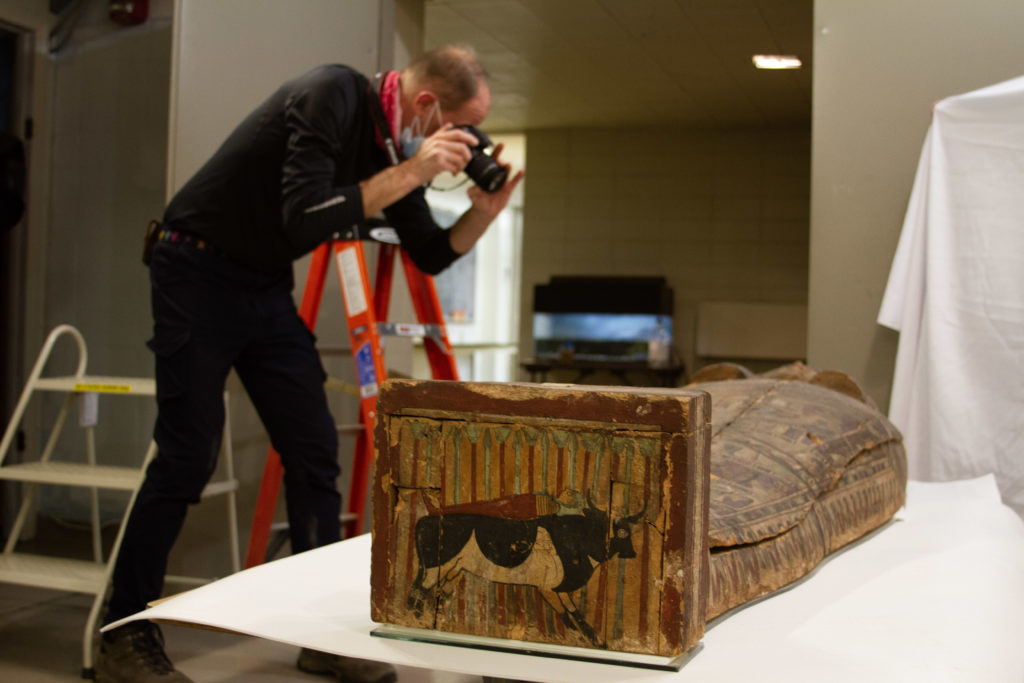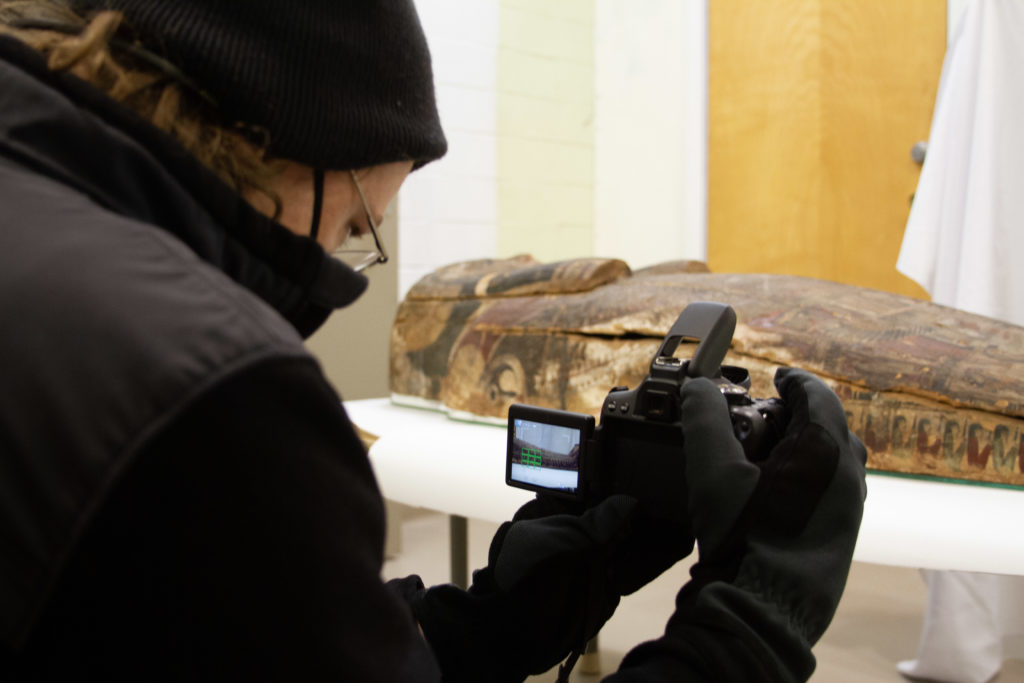Did you know that the only two ancient Egyptian mummies in Indiana are located in Richmond? One is in Wayne County Historical Museum, and the other is right here at Earlham College as a part of the Joseph Moore Museum. We are excited to introduce you to an exciting project we had been working on, in cooperation with the Computer Science Department and the Joseph Moore Museum.

Despite the museum’s closure to the public since the pandemic, Joseph Moore Museum has been working to bring better and improved exhibitions to the public when it reopens. With an Indiana humanities grant, students in the Exhibit Design class redesigned the ancient Egypt exhibit. Over the winter break, the existing exhibit was demolished. For the first time in 10 years, the sarcophagus was taken out of the display case before the demolition and moved to a safe location.
As soon as the Spring semester started, Charlie, Craig, and Yujeong went down to the museum for a rare opportunity to digitize the sarcophagus. With the goal to build a 3-dimensional digital model of the sarcophagus, Charlie and Craig took about 180 overlapping photos of the sarcophagus from the top and its four sides using a basic digital SLR camera. We then used the open source 3D modeling software OpenDroneMap (ODM) to build a digital model of Ta’an’s sarcophagus.

ODM, also known as OpenDroneMap, is a powerful tool for processing imagery into maps and 3D models, e.g. the Icelandic Field Studies program uses it as part of there multidisciplinary research group that collaborates with archeologists in Iceland to build open-source, open-hardware gear for near-Earth surveying. As one of its primary project recently funded by the National Geographic Society, the IFS group has been surveying several ancient Norse sites in Iceland to look for early settlement activity from subterranean features with tools like ODM.

The digitized 3D model of the sarcophagus can be viewed with MeshLab, and it encompasses an incredible amount of details. Viewers can take a close look at the paintings, textures, and even cracks on the sarcophagus. Furthermore, even after the sarcophagus decomposes past its preservation plan, we now have an accurate visual data of the artifact that future scholars can use to study and honor.
Leave a Reply
You must be logged in to post a comment.